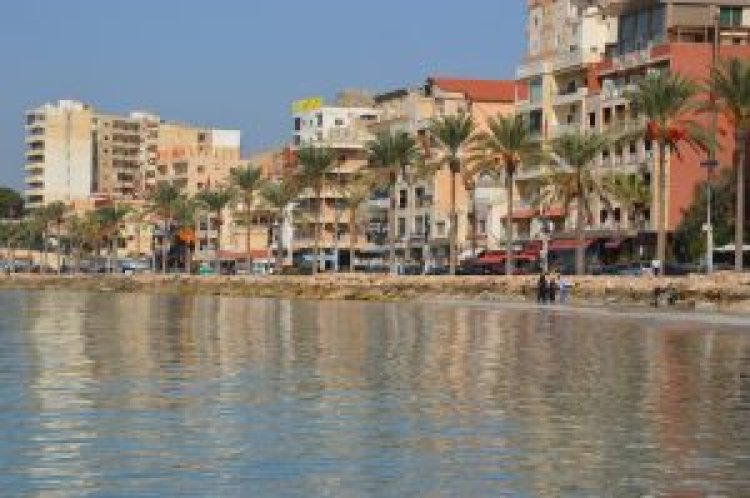The sights in Lebanon that are absolutely worth seeing
Discover Lebanon's captivating wonders! From ancient ruins to vibrant cities, explore sights that promise unforgettable experiences. Plan your journey now!
Share this Post to earn Money ( Upto ₹100 per 1000 Views )
Situated on the eastern shore of the Mediterranean, Lebanon has a mesmerizing mosaic of vistas that entice visitors to discover its varied topography and abundant historical legacy. Lebanon provides a distinctive combination of cultural, archeological, and natural treasures that are well worth seeing, ranging from ancient marvels to natural wonders. Baalbek is a living example of Lebanon's past, with its enormous Roman temples nestled among hills covered with cedar. This archaeological wonder takes tourists back in time to the Bekaa Valley, where myth and grandeur once met.
Resonating with millennia of history, Byblos, one of the world's oldest continually inhabited towns, emerges along the Mediterranean coast, revealing Phoenician remains and a lively Old Souk. The exquisite stalactite and stalagmite formations of Jeita Grotto, a subterranean wonder close to Beirut, captivate visitors and provide a dreamlike trip through crystalline chambers.
The sacred and age-old Cedars of God, guardians of the Kadisha Valley, represent the tenacity of Lebanon and offer a tranquil haven in the natural world. Located atop Mount Lebanon, Harissa welcomes both pilgrims and visitors to its highland sanctuary, where the famous monument of Our Lady of Lebanon stands guard over expansive views of the Bay of Jounieh. This introduction takes us on a tour to some of the most iconic locations in Lebanon, where spirituality, nature, and history come together to create a mystical and complex place that is well worth seeing.
Here are some of the sights in Lebanon that are absolutely worth seeing.

1. Baalbek: Old World Wonders Among the Cedars: Baalbek, which was formerly known as Heliopolis, provides evidence of Lebanon's extensive ancient heritage. Known for its enormous Roman temples, this archeological monument is situated in the lush Bekaa Valley. The magnificence of classical Roman architecture is on display at the Temple of Bacchus, which honours the Roman god of wine, and the Temple of Jupiter, which has enormous columns. Encircled by stately Lebanese cedars, Baalbek whisks guests back in time to a magical place where history and myth combine in an exciting setting.
2. Byblos: A Millennium by the Sea Tapestry: Along the Mediterranean coast, Byblos, one of the oldest continuously inhabited towns in the world, reveals a historical tapestry. A window into Lebanon's maritime history may be found in the Phoenician ruins, which include the Temple of Baalat Gebal and the old city walls. Wander around the quaint Old Souk, where lively marketplaces and historic Lebanese architecture can be seen on cobblestone alleys. Byblos is more than simply a city; it is a living history of the many civilizations that have shaped this treasure of a shoreline.
3. Jeita Grotto: Underground Magnificence Beneath the Rocks: Nestled in the foothills close to Beirut, Jeita Grotto is a natural treasure that welcomes travelers to discover its underground grandeur. Made up of two linked limestone caverns, the grotto displays stunning stalactites and stalagmites that glow in the dark to provide an enthralling sight. By boat, one may explore the bottom cave, which offers a fantastic voyage through glistening, clean waters. Jeita Grotto, regarded as one of the world's most exquisite caves, showcases the exquisite beauty that nature has crafted over millions of years.
4. The God's Cedars: Age-Old Mountain Watchmen: The Cedars of God, which are a living example of Lebanon's unfading natural beauty, are situated in the Kadisha Valley. These old trees—some of which are over a millennium old—are valued for their historical and cultural significance. The Cedars of God, with the breathtaking Qadisha Valley as a background, stand for tenacity and fortitude. The Bible even makes reference to the forest, which supplied wood to prehistoric societies. It is now a protected reserve where anyone is welcome to experience the majesty and tranquillity of these imposing sentinels.
5. Harissa: The Mountaintop Sanctuary: The renowned monument of Our Lady of Lebanon, a representation of spirituality and peace, is located in the hamlet of Harissa, perched atop Mount Lebanon. The pilgrimage destination is set against a tranquil setting thanks to Harissa's expansive views over the Mediterranean and the Bay of Jounieh. Travelers may access the monument via winding road or cable car, and when they get to the top, they are rewarded with stunning views that go well beyond the coast line in addition to a feeling of spiritual peace.
To sum up, Lebanon's sites, each representing a chapter in the nation's rich history, entice visitors with a charm that cuts across space and time. Lebanon provides a variety of experiences that fascinate the senses, from the ancient marvels of Baalbek to the seaside appeal of Byblos, the underground magnificence of Jeita Grotto, the towering Cedars of God, and the spiritual sanctuary of Harissa.
Getting a Lebanon tourist visa from India is essential for anybody who is keen to start this fascinating trip and discover the treasures of this Mediterranean jewel. This trip document provides access to Lebanon's distinctive cultural assets, scenic landscape, and historical tapestry. The views of Lebanon, as they wind past ancient ruins, look upon centuries-old cedars, and take refuge in highland sanctuaries, make a lasting impression on those who are lucky enough to experience their magnificence. A trip to Lebanon, with its many interesting and well-worth-seeing places, promises to be more than simply a trip; it will also change you since it is a place where nature and history coexist in eternal harmony.








